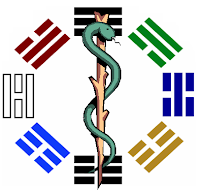Symptoms
Symptoms A patient with dyspepsia may suffer from one or more of the following symptoms: Patients with this condition complain of several symptoms. This may include one or more of the following: a discomfort usually described as a burning sensation felt in the upper abdomen or lower chest, bloating, belching, gas build up and nausea. An early feeling of fullness with meals is a frequent complaint. Stress, fatigue, poor diet, and lack of exercise are believed to aggravate this condition. Because the above symptoms are very similar to those of an ulcer and because of the fact that all tests are negative this type of indigestion is usually referred to as “non-ulcerative dyspepsia”.
Increased risk
The following factors are believed to increase the risk of suffering from non-ulcer dyspepsia: Nonsteroidal anti-inflammatory drugs (NSAIDs), such as aspirin and ibuprofen (Advil, Motrin, others), and antibiotics, consuming carbonated beverages and spicy, greasy or fatty foods, overeating, consuming too much caffeine or alcohol, smoking and stress
Diagnosis
To make a diagnosis of nonulcer dyspepsia the following medical problems that can cause abdominal pain and indigestion, must be ruled out: Ulcers of stomach, upper small intestine or esophagus, gastro-esophageal reflux disease (GERD), gastritis, gallstones, diseases of the liver, diseases of the pancreas, irritable bowel syndrome (IBS), celiac disease and crohn's disease. A number of diagnostic tests are used to help with the diagnosis which may include: blood tests, barium X-ray or contrast study, endoscopy and ultrasound.
Traditional treatment
Traditional approaches of treatment include: Antacids, Acid blockers, proton pump inhibitors, prokinetic agents, antispasmodics, acid suppressors (cytoprotective agents) and low-dose antidepressants. Antibiotic treatment for Helicobacter pylori infection. Behavior therapy focuses on changing unwanted or unhealthy behaviors, typically using a system of rewards and reinforcements of positive behavior.
Role of a complementary and alternative medicine:
Many forms of alternative and complementary therapies may be used to help with the treatment of non- ulcer dyspepsia. Acupuncture and homeopathy are among the safest and probably the most effective methods of treatment in this category. Both are energetic methods of intervention aimed at correcting the energetic imbalances that might have led to the development of non-ulcer dyspepsia.
Acupuncture
Acupuncture is a method of therapy intended to promote natural body healing, improve and restore bodily functions and relieve or reduce pain. Acupuncture is accomplished by the insertion of special very fine needles through the skin at specific points on the body known as acupuncture points. Heat or electrical stimulation may then be applied to the needles. Needles are sterile and disposable. Scientific studies have shown that the insertion of needles at acupuncture points stimulates the nervous system to release certain natural chemicals at different tissue levels. This will modify the body's reaction to pain and stimulate the release of other chemicals to influence the healing process and the regulation of different bodily functions. Acupuncture was found to release chemicals responsible for stimulating the “immune system”. This means that the body becomes more able to use its own natural capabilities to promote physical and emotional well-being. The NIH and WHO have both concluded that there are enough studies to support the efficacy of acupuncture in treating many pain conditions
Homeopathy
Homeopathy is a therapeutic method using natural substances in micro dosages to stimulate the body's innate natural resources. Homeopathy views a person's health as a reflection of the entire individual rather than only in terms of the presence of isolated symptoms. Homeopathic remedies are believed to stimulate innate natural defense systems. It is speculated that electromagnetic signals or energies are transferred in the diluted homeopathic preparations retaining the "memory" of the original substance used, thereby triggering responses in the body. Homeopathic remedies (unlike herbal products) are not considered nutritional supplements , and are manufactured according to the US homeopathic pharmacopeia. They are known for their extreme safety and lack of interaction with any traditional medications the patient might be taking.
Related Scientific Studies for complementary therapies
Science
Scientific research supports the efficacy of complementary medicine in treating non-ulcerative dyspepsia
Origin
Dyspepsia is derived from Greek and means “difficult to digest”
- Koretz RL, Rotblatt M. Complementary and alternative medicine in gastroenterology: The good, the bad, and the ugly.
- Ouyang H, Chen JD. Review article: therapeutic roles of acupuncture in functional gastrointestinal disorders.
- Paterson C, Ewings P, Brazier JE, Britten N. Treating dyspepsia with acupuncture and homeopathy: reflections on a pilot study by researchers, practitioners and participants.
- Chen R, Kang M. Observation on frequency spectrum of electrogastrogram (EGG) in acupuncture treatment of functional dyspepsia
